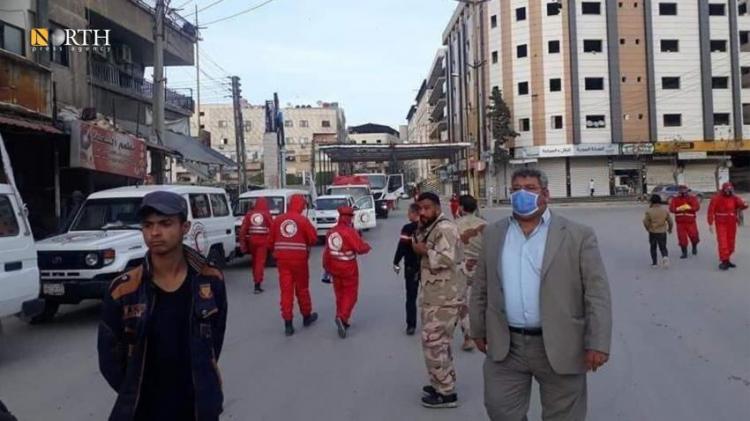DAMASCUS, Syria (North Press) – In the past few months, Syria has set record numbers of coronavirus infections in conjunction with great losses in the health and education sectors, while the officially announced infection numbers remain questionable and suspicious.
Coronavirus began to spread in Syria on March 22, when the first infection was recorded of a person coming from outside the country, while the first death was recorded on March 29.
On the first day of 2021, the Syrian Ministry of Health announced the registration of 92 new cases of coronavirus, the recovery of 70 cases and six deaths, bringing the total number of infections recorded so far to 11,562, including 717 deaths.
Questionable statistics
The Syrian Ministry of Health reported a total of 8,580 infections as of December 9, while the UN Security Council recorded, based on reports from inside the country, at least 30,000 infections at the beginning December, and many say that the real numbers are likely to be higher.
During the first half December, officially declared coronavirus infections reached 1,479, an increase of 584 over the same period in November, and deaths reached 121, an increase of 68 cases.
Last Wednesday, The Under-Secretary-General for Humanitarian Affairs Mark Lowcock said that the number of reported COVID-19 cases in Syria continues to rise, though limited testing in all parts of the country makes the extent of the outbreak impossible to assess with certainty.
“The number of reported cases of coronavirus in schools increased more than three times during November,” the UN official said in his testimony via a television circuit during a session of the Security Council devoted to discussing the situation in Syria.
Mr. Lowcock also warned that prices of subsidized bread have doubled, while the price of subsidized diesel more than doubled since September. Meanwhile, he added, hostilities have been continuing in northern Syria in recent weeks, putting civilians at risk.
Spread in schools
Since the beginning of the school year until December, the reported infections in the Syrian education sector amounted to some 600, distributed in the Syrian government-controlled areas.
Hatoon al-Tawashi, director of the School Health Directorate in the Syrian Education Ministry, revealed in previous statements that these infections had been confirmed by the Ministry of Health.
She considered that “this number constitutes a non-serious percentage compared to the number of students in Syria, which is approximately four million students in all educational levels.”
Regarding the number of infections among faculty and staff in the education sector, Tawashi clarified that the number of infections among teachers, administrators, employees, and school health personnel is around 800.
The declared deaths among teachers were limited to eight people only, four teachers in Homs, three in Aleppo, and one in Latakia, in addition to one employer in Damascus and two doctors in school health, one in Hama and the other in Tartus.
A school in Salkhad, south of Suwayda, was closed for ten days due to coronavirus infections.
The Director of Latakia’s Education Directorate, Imran Abu Khalil, told the pro-government newspaper al-Watan on December 16 that the number of infections has reached 95 so far, including 28 students and 67 educational and administrative staff.
Among medical personnel
As for the losses of medical staff in Syria in 2020, 151 doctors of different specialties in the Syrian governorates died from the virus, and Damascus and its countryside had the largest share of them.
Health workers are concerned about the deterioration of conditions in the areas of the Syrian government due to the increasing number of infections and deaths, and the inability of hospitals to receive more patients.
According to the World Health Organization, the shortage of doctors, combined with the disastrous state of hospitals in Syria after a decade of civil war and an acute shortage of medical professionals, leaves millions of people at risk of suffering severe consequences if they become infected.
Emergency physicians make up only 3 percent of the country’s general hospital staff. Officials, including former ministers, also died due to their infection with coronavirus during 2019.

